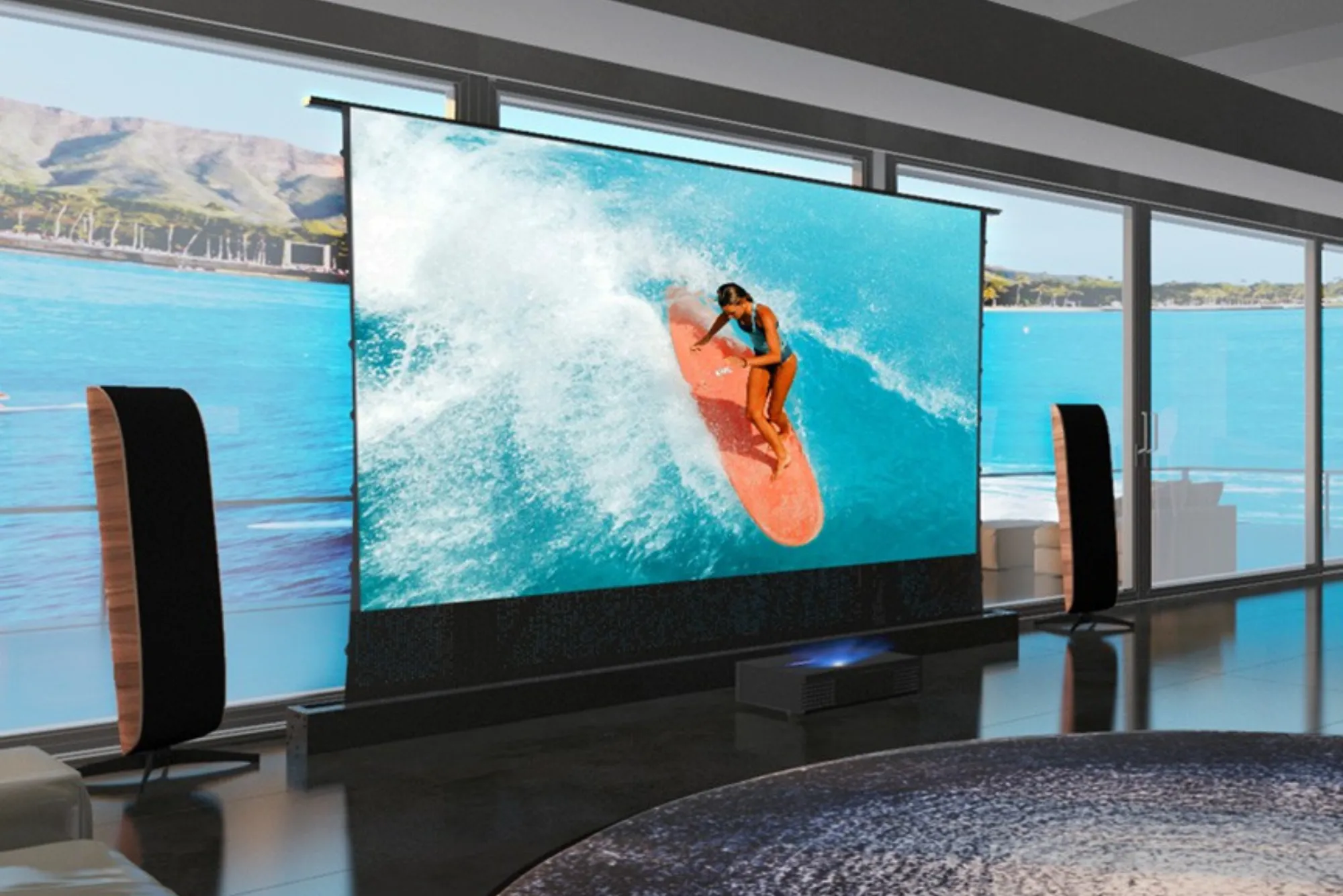Floor standing screens are versatile tools used in various settings, from business presentations and educational environments to home entertainment. Selecting the right floor standing screen can significantly impact your viewing experience and overall satisfaction. This guide provides a comprehensive overview of key factors to consider when choosing the best floor standing screens for your needs.
Understanding Floor Standing Screens
Definition and Purpose
Floor standing screens are large display panels supported by a stand or base, designed to be placed directly on the floor. Unlike wall-mounted screens, these screens offer flexibility in placement and can be easily moved to different locations. They are ideal for presentations, public displays, and interactive applications.
Different Types of Floor Standing Screens
Floor standing screens come in various types, including:
- LCD Screens: Known for their high brightness and clarity, suitable for well-lit environments.
- LED Screens: Offer superior contrast and color accuracy, often used for high-definition displays.
- Projection Screens: Designed for use with projectors, these screens are often used in larger venues.
Key Factors to Consider When Choosing Floor Standing Screens
Screen Size and Dimensions
Matching Screen Size to Your Space
The size of the floor standing screen should be proportional to the space where it will be used. For smaller rooms, a screen with a smaller diagonal measurement might be more appropriate, while larger spaces can accommodate bigger screens.
Common Sizes for Floor Standing Screens
Floor standing screens typically range from 32 inches to 85 inches or more. Consider the viewing distance and purpose when selecting the size. For instance, a screen used for large presentations may require a larger size compared to a screen for personal use.
Resolution and Display Quality
Importance of Resolution
Resolution impacts the clarity and sharpness of the displayed image. Higher resolutions provide more detail and are essential for detailed graphics and text. Common resolutions include Full HD (1920×1080), 4K (3840×2160), and 8K (7680×4320).
High-Definition vs. Standard Display
High-definition screens offer a more vivid and detailed image compared to standard displays. For professional and entertainment purposes, investing in a high-definition floor standing screen is advisable.
Screen Material and Build Quality
Types of Materials Used
Floor standing screens are made from various materials, including plastic, metal, and glass. The choice of material affects the screen’s durability and appearance. Metal frames are often preferred for their sturdiness, while glass screens can provide a sleek, modern look.
Durability and Longevity
Consider the build quality and materials used in the screen’s construction. A well-built screen will be more resistant to wear and tear, ensuring a longer lifespan.
Portability and Ease of Setup
Features for Easy Transport
If you need to move the screen frequently, look for features such as wheels or a lightweight design. Some floor standing screens come with carrying cases or built-in handles for easier transportation.
Assembling and Disassembling the Screen
Check the ease of assembly and disassembly. A screen that is simple to set up and take down can save time and effort, especially if it will be used in different locations.
Additional Features
Built-in Speakers
Some floor standing screens come with integrated speakers, which can be useful for presentations or video playback. Consider whether this feature meets your needs or if external speakers are preferable.
Connectivity Options (HDMI, USB, etc.)
Ensure the screen has the necessary connectivity options for your devices. HDMI and USB ports are common and allow you to connect various media sources.
Adjustable Stands
An adjustable stand can enhance flexibility by allowing you to modify the screen’s height and angle. This feature is particularly beneficial for achieving optimal viewing positions.
Budget Considerations
Price Ranges for Floor Standing Screens
Affordable floor standing screens typically offer basic features and lower resolutions. These options are suitable for general use or temporary setups.

Mid-Range and Premium Models
Mid-range and premium models provide enhanced features such as higher resolutions, better build quality, and additional functionalities. Investing in a higher-end screen can improve your overall experience and satisfaction.
Cost vs. Features
Evaluating Cost-Effectiveness
Consider the balance between cost and features. While a higher price often means better quality and more features, assess whether these additional features are necessary for your intended use.
Balancing Budget and Desired Features
Determine which features are most important for your needs and find a screen that offers a good balance between functionality and cost.
Brand and Manufacturer Reputation
Researching Reliable Brands
Research reputable brands known for quality floor standing screens. Brands like Samsung, LG, and Sony are well-regarded for their reliability and performance.
Reading Customer Reviews and Ratings
Importance of User Feedback
Customer reviews provide insights into the screen’s performance, reliability, and any potential issues. Reading reviews can help you make an informed decision based on real user experiences.
Where to Find Reviews
Check online retailers, forums, and review sites for comprehensive feedback on different models and brands.
Where to Buy Floor Standing Screens
Online Retailers
Online retailers often offer a wide selection of floor standing screens and competitive prices. Shopping online also provides the convenience of comparing models and reading reviews from other buyers.
Physical Stores
Purchasing from a physical store allows you to see the screen in person and assess its quality firsthand. You can also receive personalized advice from sales representatives.
Comparing Prices and Warranties
Compare prices across different retailers and check for any available discounts or promotions. Additionally, review warranty options to ensure coverage for potential issues.
Installation and Maintenance Tips
Follow the manufacturer’s instructions for installing the floor standing screen. Proper installation ensures stability and optimal performance.
Routine Maintenance
Cleaning and Care Tips
Regularly clean the screen using appropriate materials to avoid damage. Follow the manufacturer’s recommendations for cleaning and maintenance.
Troubleshooting Common Issues
Familiarize yourself with common issues and their solutions. Refer to the user manual or seek professional help if needed.








